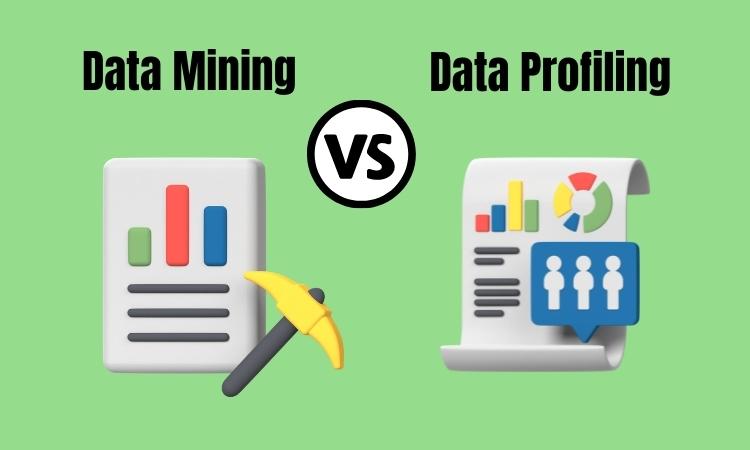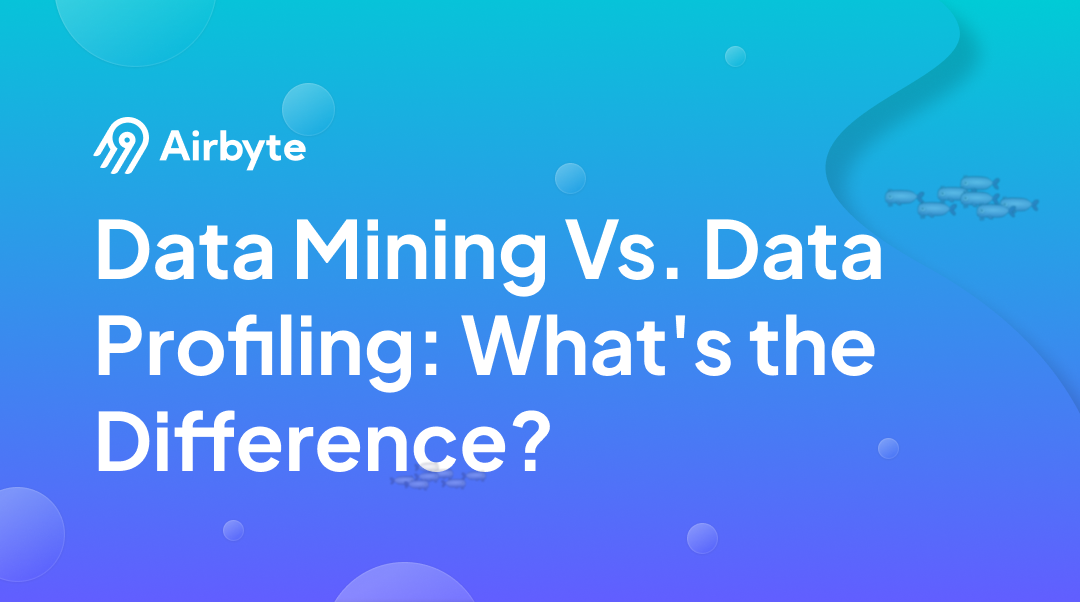Data Mining vs. Data Profiling: What’s the Difference
Summarize this article with:
✨ AI Generated Summary
Data is one of your organization's best strategic assets. However, to utilize this data efficiently, you must employ several techniques at various stages of its lifecycle. These can include data mining, validation, and profiling. Understanding how these techniques can help you leverage your data’s potential is crucial.
This article mainly discusses the key difference between data profiling and data mining. Data mining involves analyzing large datasets to identify trends and patterns and make informed predictions about future events. On the other hand, profiling focuses on maintaining data accuracy and relevance before analysis. You will understand when to use one over the other and be able to identify their benefits in your data management efforts.
What is Data Profiling?
Data profiling, also known as data archeology, helps you analyze existing data within various systems, such as data warehouses and databases, to evaluate its quality. The process includes extracting data from these sources, examining it, and summarizing relevant information. With data profiling, you can ensure the data’s accuracy and consistency across different data domains, including enterprise data warehouses.

Many data profiling tools, such as Talend Open Studio and Aggregate Profiler, can facilitate better organizational data management and utilization. These tools help evaluate the data content, structure, and quality by examining the connection between datasets, enabling you to make informed decisions.
What is Data Mining?
Data mining involves analyzing and discovering hidden insights in large datasets. This process allows you to analyze vast amounts of data stored in warehouses, lakes, and databases and uncover patterns, trends, and relationships within your data. Data mining comprises several steps, including data cleaning, transformation, and pattern evaluation.

You can utilize advanced algorithms in your data mining initiatives. These algorithms help identify critical insights from large amounts of data, allowing you to understand better customer behavior, market trends, and operational inefficiencies.
Data Mining vs. Data Profiling: Key Differences
While data mining and profiling are crucial for data analysis, they have distinct purposes and approaches. The primary goal of data profiling is to examine the data for accuracy, consistency, and correctness. It also focuses on understanding data distributions.
The main difference between Data Mining and Data Profiling is that Data Mining involves discovering patterns and insights from large datasets using algorithms, while Data Profiling focuses on analyzing data to understand its structure, quality, and relationships.
On the other hand, data mining delves deeper into uncovering insights that can help you make better decisions and predict future trends.

This table explores the difference between data mining and data profiling based on various factors listed below:
Purpose
Data mining and profiling play crucial roles in data management processes. Data mining can help you sift through datasets to uncover valuable associations, connections, and trends. These insights assist in solving business problems.
On the other hand, data profiling helps organize and prepare data for further analysis by ensuring its consistency and logic. It also allows you to analyze raw data and collect informative summaries about the data.
Processes Involved
Data mining typically involves several steps to prepare data for analysis. The first step, data preparation, begins with cleaning up and transforming your data to fix errors and inconsistencies.
Once the data is in a usable format, you can use ML algorithms and AI to create, train, and evaluate data models based on their performance. During the last step, you can deploy these models into the production environment and make informed business decisions.
On the contrary, data profiling allows you to examine data directly at the source and understand it in detail. You can also consolidate your data from disparate sources using data integration tools like Airbyte and get a holistic view of your data for further examination.
After shifting your data into a central location, you can perform techniques like structure discovery, relationship discovery, and content discovery to delve deeper within your data. By performing data profiling, you can ensure data quality and check whether the system is operational.
Techniques
Data mining helps you explore data deeply using techniques such as clustering, association rules, outlier detection, and sequential patterns. These techniques help you group similar data points, search for patterns, identify exceptions, and analyze sequential data to find trends.
Conversely, in data profiling, you can utilize various techniques to understand the structure and characteristics of your data. Some key techniques include column profiling, cross-column profiling, cross-table profiling, and data rule validation.
When to Use Data Profiling?
Below are some of the examples demonstrating when you can use data profiling:
- Enhancing Customer Service: By profiling customers' data, you can gain insights into customer demographics, preferences, and purchase history. This information empowers you to understand their requirements and offer more individualized service.
- Understand Data Structure: Data profiling ensures you understand the data structure, including data types, formats, and relationships between different data points.
- Improving Data Security: Data profiling can help identify sensitive data risks within your datasets. Once identified, you can implement appropriate security measures to protect this information. Additionally, data profiling can also identify trends in datasets that might indicate suspicious activities or fraud attempts.
- Reduce Risks: Many organizations face legal constraints regarding data handling. Data profiling helps you comprehend the structure of your data, enabling you to create data governance policies and procedures. By outlining rules for handling different data types, you can ensure compliance and mitigate risks associated with data breaches.
When to Use Data Mining?
Here are some use cases of data mining:
- Shopping Market Analysis: Data mining processes help you examine customers' search patterns and fashion trends. Your team can leverage this information to predict future purchasing behaviors and develop targeted marketing strategies.
- Analyzing Material Demand: With data mining, you can analyze historical records of raw materials that were used more frequently. It allows you to predict customer demand and maintain a steady supply chain, ensuring an uninterrupted flow of goods.
- Detecting False Claims: Data mining is crucial in the healthcare department for tracing fraudulent activity, such as false medical insurance claims. It helps hospitals spot odd trends in drug purchases or illogical prescribing patterns.
Key Takeaways
Adequate understanding and accuracy of data depends on both data profiling and mining. In data profiling, you look at the correctness and relevance of data to ensure its quality. At the same time, data mining explains trends and patterns in data to predict future events and provide hidden insights.
These strategies work together in data analysis to help find analytical information that promotes success. By understanding respective key differences, you can utilize the data more effectively. With the research powers of data mining and the quality assurance of data profiling, you can make better decisions and optimize operations efficiently.
FAQs
What is the difference between data mining and data cleaning?
Data cleaning is the process of finding and correcting data errors, such as typing mistakes, spelling errors, or invalid data. On the other hand, data mining is discovering patterns in datasets using techniques like clustering, classification, etc.
What is the difference between data profiling and data wrangling?
Data wrangling involves structuring and transforming raw data into a usable format. It also includes tasks like standardizing formats and finding missing values. Data profiling includes analyzing existing data for better understanding and accuracy.

